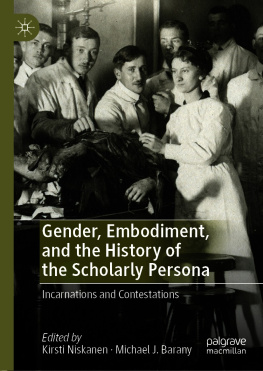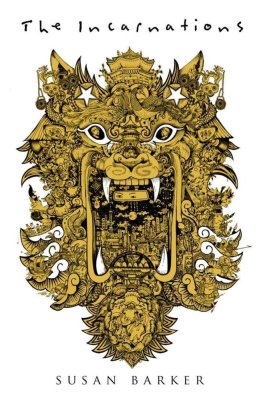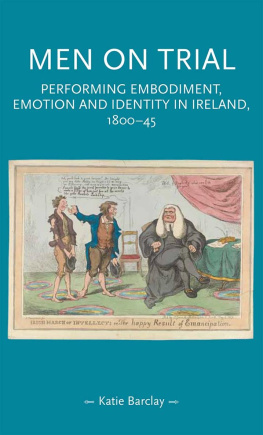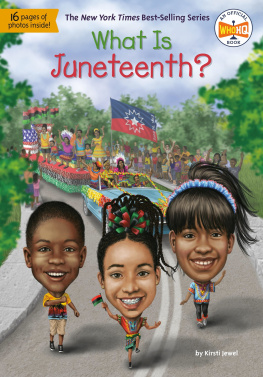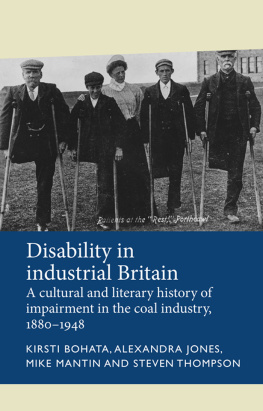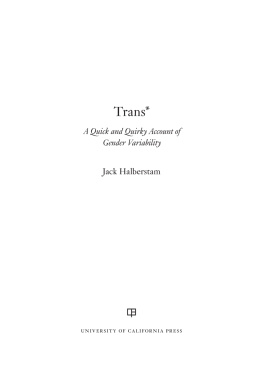Kirsti Niskanen - Gender, Embodiment, and the History of the Scholarly Persona Incarnations and Contestations
Here you can read online Kirsti Niskanen - Gender, Embodiment, and the History of the Scholarly Persona Incarnations and Contestations full text of the book (entire story) in english for free. Download pdf and epub, get meaning, cover and reviews about this ebook. year: 2021, publisher: Springer International Publishing, genre: Romance novel. Description of the work, (preface) as well as reviews are available. Best literature library LitArk.com created for fans of good reading and offers a wide selection of genres:
Romance novel
Science fiction
Adventure
Detective
Science
History
Home and family
Prose
Art
Politics
Computer
Non-fiction
Religion
Business
Children
Humor
Choose a favorite category and find really read worthwhile books. Enjoy immersion in the world of imagination, feel the emotions of the characters or learn something new for yourself, make an fascinating discovery.
- Book:Gender, Embodiment, and the History of the Scholarly Persona Incarnations and Contestations
- Author:
- Publisher:Springer International Publishing
- Genre:
- Year:2021
- Rating:3 / 5
- Favourites:Add to favourites
- Your mark:
- 60
- 1
- 2
- 3
- 4
- 5
Gender, Embodiment, and the History of the Scholarly Persona Incarnations and Contestations: summary, description and annotation
We offer to read an annotation, description, summary or preface (depends on what the author of the book "Gender, Embodiment, and the History of the Scholarly Persona Incarnations and Contestations" wrote himself). If you haven't found the necessary information about the book — write in the comments, we will try to find it.
Kirsti Niskanen: author's other books
Who wrote Gender, Embodiment, and the History of the Scholarly Persona Incarnations and Contestations? Find out the surname, the name of the author of the book and a list of all author's works by series.
Gender, Embodiment, and the History of the Scholarly Persona Incarnations and Contestations — read online for free the complete book (whole text) full work
Below is the text of the book, divided by pages. System saving the place of the last page read, allows you to conveniently read the book "Gender, Embodiment, and the History of the Scholarly Persona Incarnations and Contestations" online for free, without having to search again every time where you left off. Put a bookmark, and you can go to the page where you finished reading at any time.
Font size:
Interval:
Bookmark:
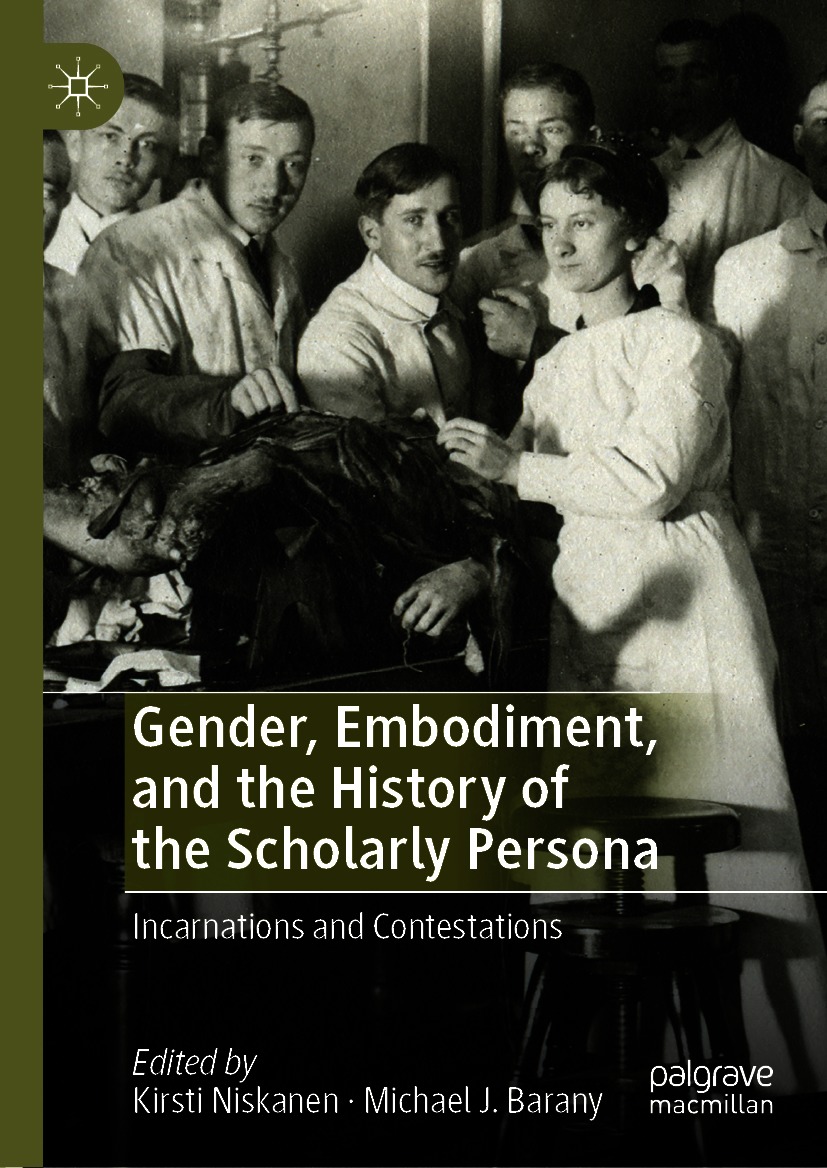

Cover image: courtesy of Helsinki University Museum
This Palgrave Macmillan imprint is published by the registered company Springer Nature Switzerland AG
The registered company address is: Gewerbestrasse 11, 6330 Cham, Switzerland
Being a scholar or scientist has always been a way of being in the world, never just a job. This highly readable collection of essays explores how (and how not) to become the very model of a mathematician or a historian or a naturalist. Forget white lab coats and horn-rimmed glasses: as this book shows in vivid detail, assuming a learned persona can shape bodies as well as minds, characters as well as costumes.
Lorraine Daston, Max Planck Institute for the History of Science, Germany
This is a book we have been waiting for, especially scholars who are concerned with the historical field of scholarly and scientific persona studies. The spectrum of case studies excavate how scholarly personae are embodied in gendered behaviours and performances on individual and institutional levels, in scholarly practices, academic cultures, self-representations, and in habits of living. With its conceptual coherence, thematic variation, and focus on gender and masculinities, this is a book that we have missed in the international research literature, and it will undoubtedly be a standard reference in the field.
Mineke Bosch, University of Groningen, The Netherlands
Through its authors and editors rich, varied and intersecting research, this is a remarkable historical inquiry into scholarly persona. The various case studies in each chapter reveal the often nationalized and gendered embodiment of scholarly and scientific identity and its formation of public display in the nineteenth and twentieth century. It is a valuable contribution to persona studies more widely and scientific persona directly.
David Marshall, Deakin University, Australia
A book by scholars about scholarly identities , past and present, is most welcome. Such a rich project prompts many responses, some autobiographical, others historiographical, but all reflective, and productively so. As the essays in this volume indicate, there are myriad possibilities for deepening our research into knowledge production so as to take account of the complex psychological and cultural factors at play . We have the chance to generate more sophisticated understanding of what it means to produce knowledge, both for those who are makers and all the other groups that have an investment in the process. The potential sources are close to infinite, and, in addition to those contained in libraries and archives, they include portraits, films, medals, clothing and accessories, hairstyles, indeed any phenomenon that is eloquent about the forms of decorum that scholarly environments promote, take for granted and police. Historians will also want to reflect upon the ways in which poetry, plays , and novels express common understandings of scholarly life while actively contributing to such views. All aspects of professional settings are of potential relevance. Just over my own career I have witnessed marked changes in the dress deemed appropriate for academic women from a setting in the early 1980s where I was advised to wear a skirt or dress, especially for meetings, through power dressing to what I take to have been a more laissez-faire mood in the 2010s where jeans are common attire. These are far from trivial matters. As the contributors suggest there is much work that is being done by modes of self-presentation, forms of sociability, and the defining features of working relationships.
But it may be wise to put the brakes on for a moment and consider the many resonances of scholar and its cognates. The term can suggest someone who is academic, that is, interested in and committed to the production of reliable knowledge. Scholars, typically, are studious beings, dedicated to learning, often in a bookish sort of way. The very word bookish alerts us to the potential for scholar to be used in a pejorative way, just as much as it can be a term of description or approbation. As a result of its bookish connotations, scholar is often associated with the humanities, more than other domains, and can hint at dryness, seclusion, the worlds of libraries and archives, rather than laboratories, clinics, or the outdoors. These are mobile, historically wrought associations. Isaac Newton was certainly a scholar, those undertaking experimental work in the twenty-first century less obviously so. In practice, knowledge-making takes many forms that defy stereotypes. Charles Lyell, the influential geologist, had worked as a lawyer and undertook extensive fieldwork; he came from a wealthy family, studied classics at Oxford, was well-read and capable of writing eloquently. The notion of fieldwork is important here since it suggests forms of dynamism, adventurousness, and energy that can easily be construed as in tension with scholarly ideals and with gender norms. Some of those who undertook extensive work in the field did not have Lyells advantages; they might earn a living from practical activities such as surveying. Hence to probe scholarly identities is to raise questions about changing conceptions and experiences of both class and gender. In a number of settings (public lectures, for instance) such peopleprivileged men and women , those of both sexes from more humble backgroundsinteracted with one another. As a result, identities were shaped in a dynamic fashion. There is much evidence, especially for the nineteenth century onwards, about the ways in which people managed themselves and others perceptions of them. Persona is one of the concepts that helps us to think about such matters. As these essays show, there are instances where individuals and groups are fully aware of what they are doingthe fabrication of the mathematician Nicolas Bourbaki is an obvious example (Chapter ).
Font size:
Interval:
Bookmark:
Similar books «Gender, Embodiment, and the History of the Scholarly Persona Incarnations and Contestations»
Look at similar books to Gender, Embodiment, and the History of the Scholarly Persona Incarnations and Contestations. We have selected literature similar in name and meaning in the hope of providing readers with more options to find new, interesting, not yet read works.
Discussion, reviews of the book Gender, Embodiment, and the History of the Scholarly Persona Incarnations and Contestations and just readers' own opinions. Leave your comments, write what you think about the work, its meaning or the main characters. Specify what exactly you liked and what you didn't like, and why you think so.

